Best Voice Caddie Rangefinders 2025
We run through some of the best Voice Caddie rangefinders, including GPS watches and lasers, currently available on the market
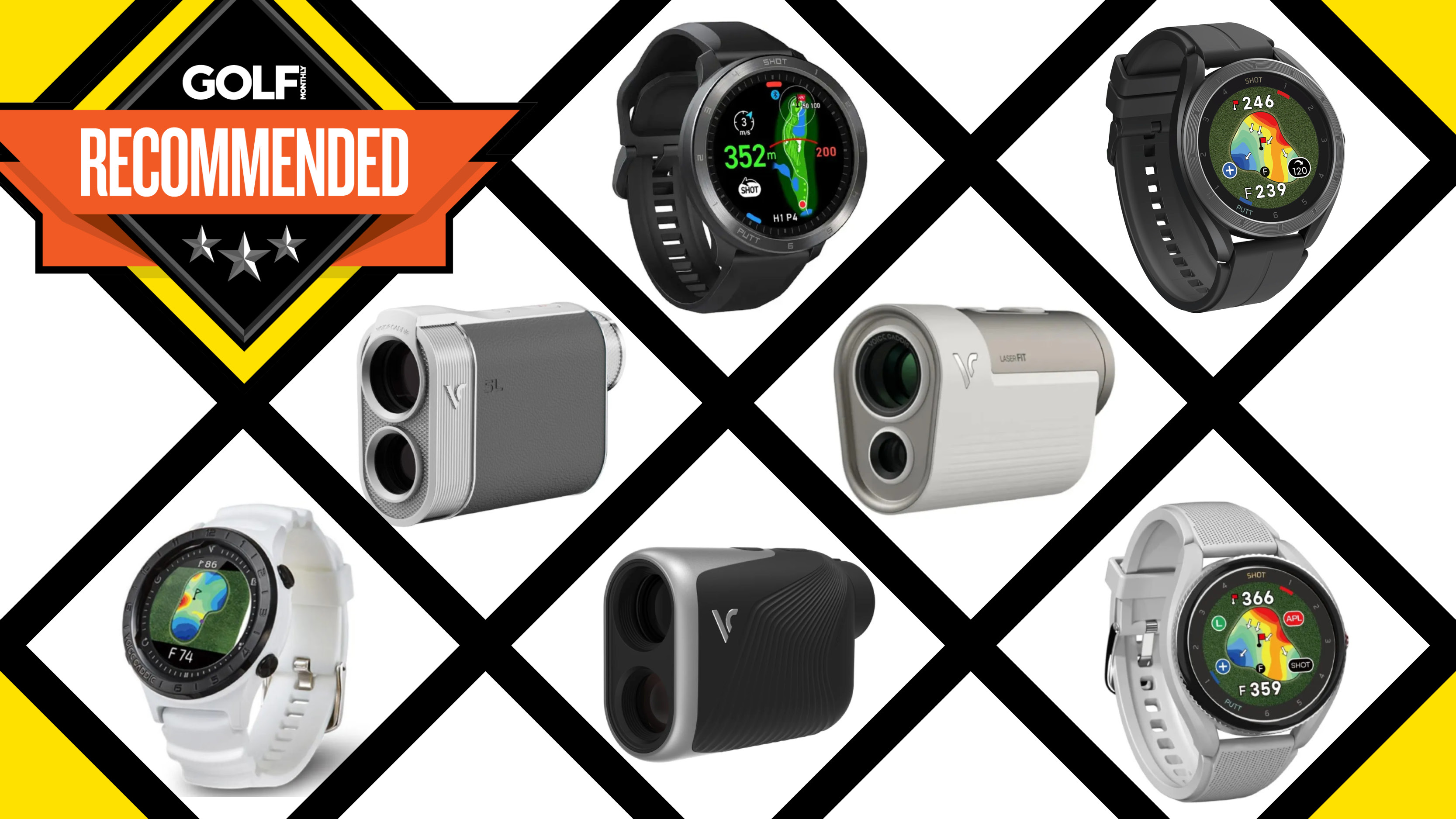

Joel Tadman
Amateur golfers have benefitted massively from the increasing quality of golf technology in the past decade or so. Gone are the days of simply eyeballing the flag, guessing the yardage and swinging away. Instead, we now have an arsenal of quality data and analytics tools that act as a mini-caddie alongside us, helping us judge distance, slope and more. One of the leading brands in this department is Voice Caddie, a company not afraid to push the boundaries of what a golf gadgets can provide for us.
From some of the best golf watches to some of the best golf launch monitors, the brand is well known in the golf world for the quality it packs into its products. They particularly excel in the rangefinder department, producing premium, durable devices at modest prices. In this guide, we've chosen some of our favorite products that we've tested recently. If you're not a rangefinder type of guy or girl then don't worry, we've included a couple of alternative Voice Caddie products in the guide including golf watches and launch monitors.
For more buying guide advice, why not check out our hubs for the best budget rangefinders, the best rangefinders with slope and the best value golf watches?
The Quick List
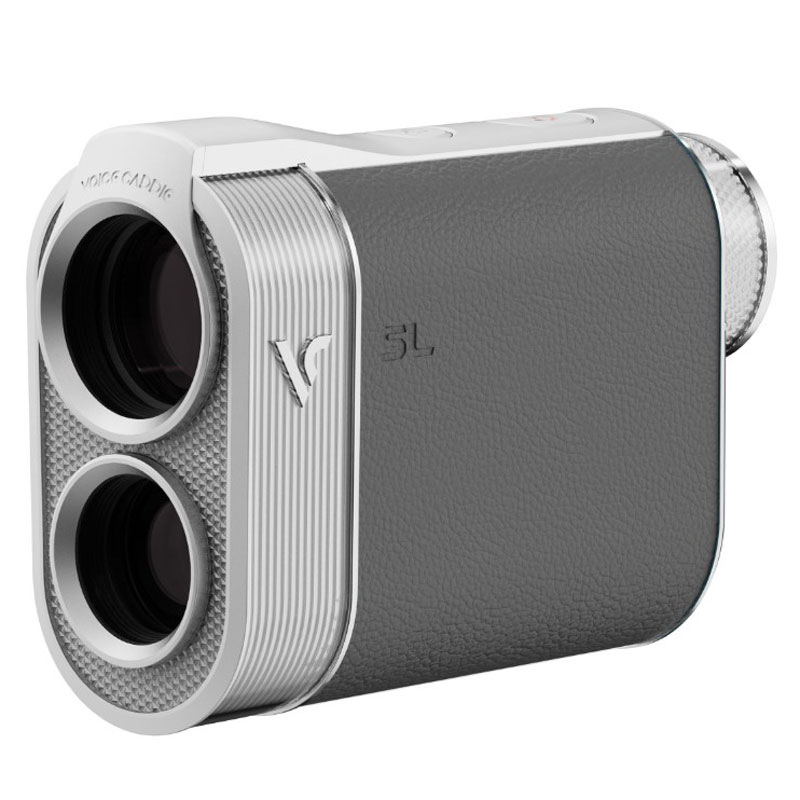
The SL3 from Voice Caddie is everything you want in a distance measuring device and then some by combining laser and GPS functionality.

Minimalist and at a good price point, the Voice Caddie Laser Fit Rangefinder is solid option for those who play a lot of 'cart path only' golf.
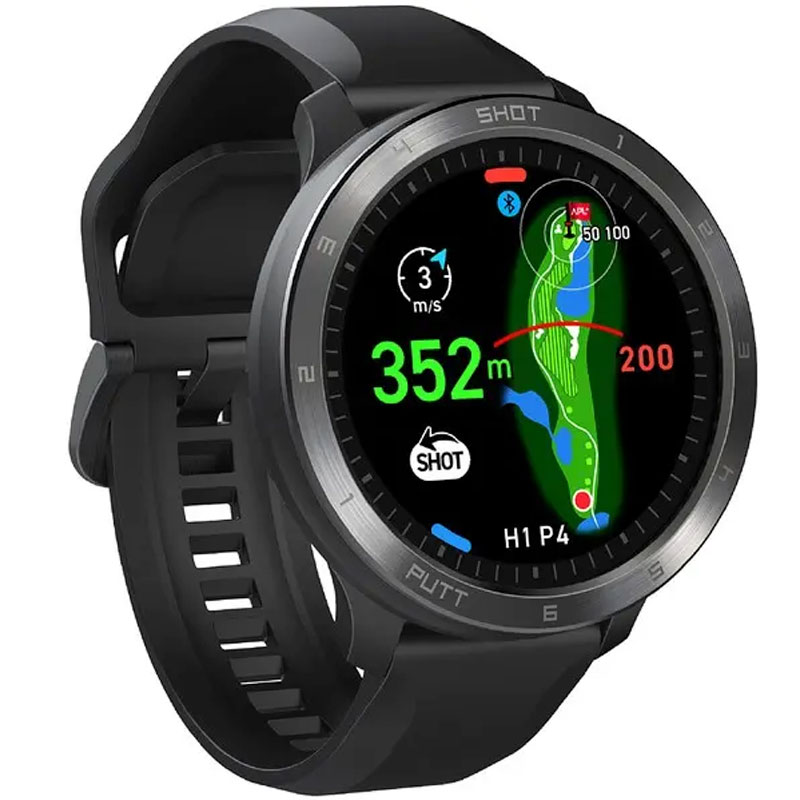
A comprehensive and premium GPS watch that comes with every feature under the sun. If it's one of the brightest, most feature-packed GPS watches you're after, this is one of the best on the market.
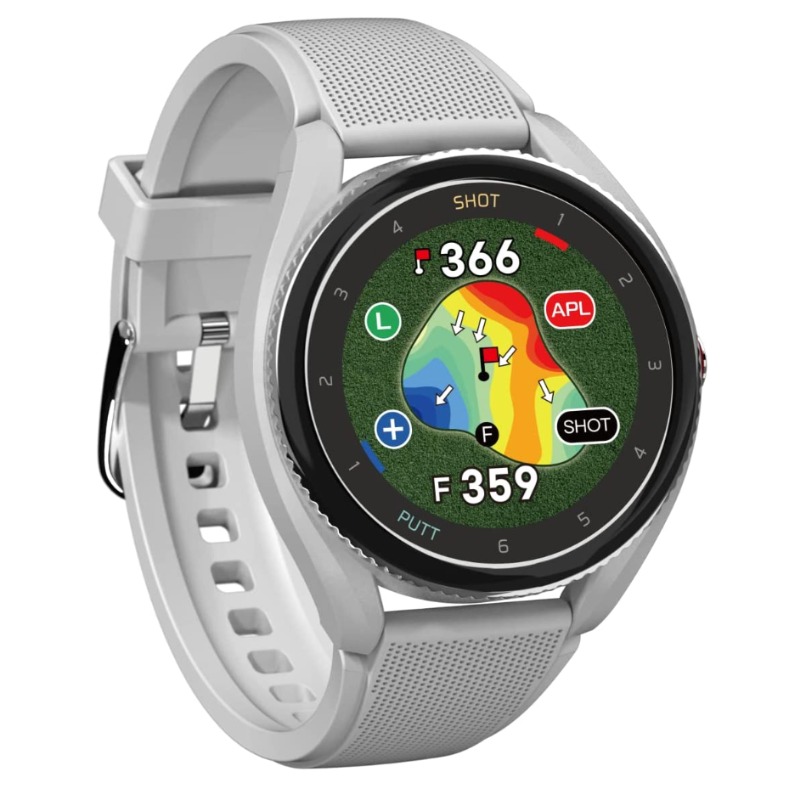
With slope functionality, heat-mapped greens and hole maps with flyovers, the T9 has all the information you need to optimize your strategy.

Full color hole maps and green undulations, along with slope adjusted distances, make the Voice Caddie A2 a very user-friendly and stylish golf watch.
Best Voice Caddie Rangefinders 2025
Best laser
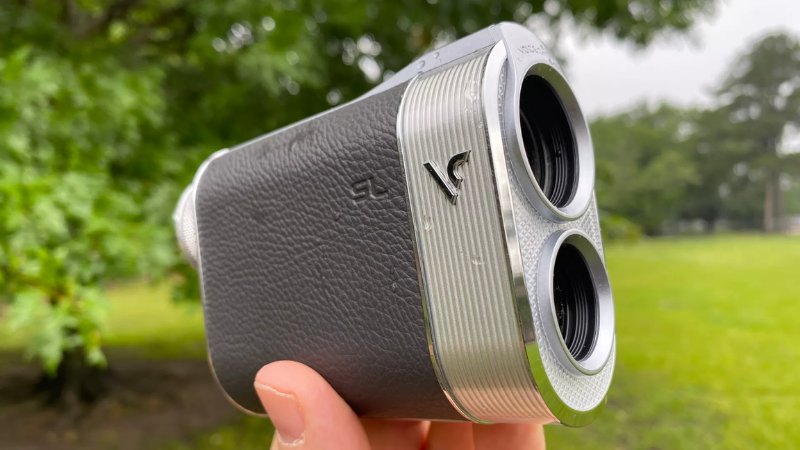
Specifications
Reasons to buy
Reasons to avoid
A very fast and powerful rangefinder that delivers all sorts of features that can help you read greens, get accurate yardages and get your shot straight onto the greens. We liked it so much it features on our Editor's Choice Awards. Visually, this is a premium looking rangefinder that comes with a very cool leather wrap that surrounds the device and allows you to grip the rangefinder nicely. The stainless steel detailing also adds more quality to this stunning rangefinder, and the LCD full color screen looks excellent under the eye-piece.
What really sets this device apart are the GPS features that are included. You can pair it up with an app on your smartphone and use it that way or utilize the screen on the device, which will tell you exactly where you are on the course, delivering basic maps of holes. You can touch the screen to find out how far certain features are from you as well. Want to know how far out you are from a target? This rangefinder will deliver fast, accurate and easy to read yardages and you can adjust the brightness of the OLED two-color display easily too. Lock onto your target with the new pin-tracer feature, and get your yardage within seconds!
The slope functionality also works really well because not only does it give you the adjusted yardage, but it also tells you the degree of slope. That part can be particularly helpful around the greens if you’re trying to figure out how uphill or downhill a chip or pitch shot is, for example.
- Read our full Voice Caddie SL3 Rangefinder Review
Best laser display
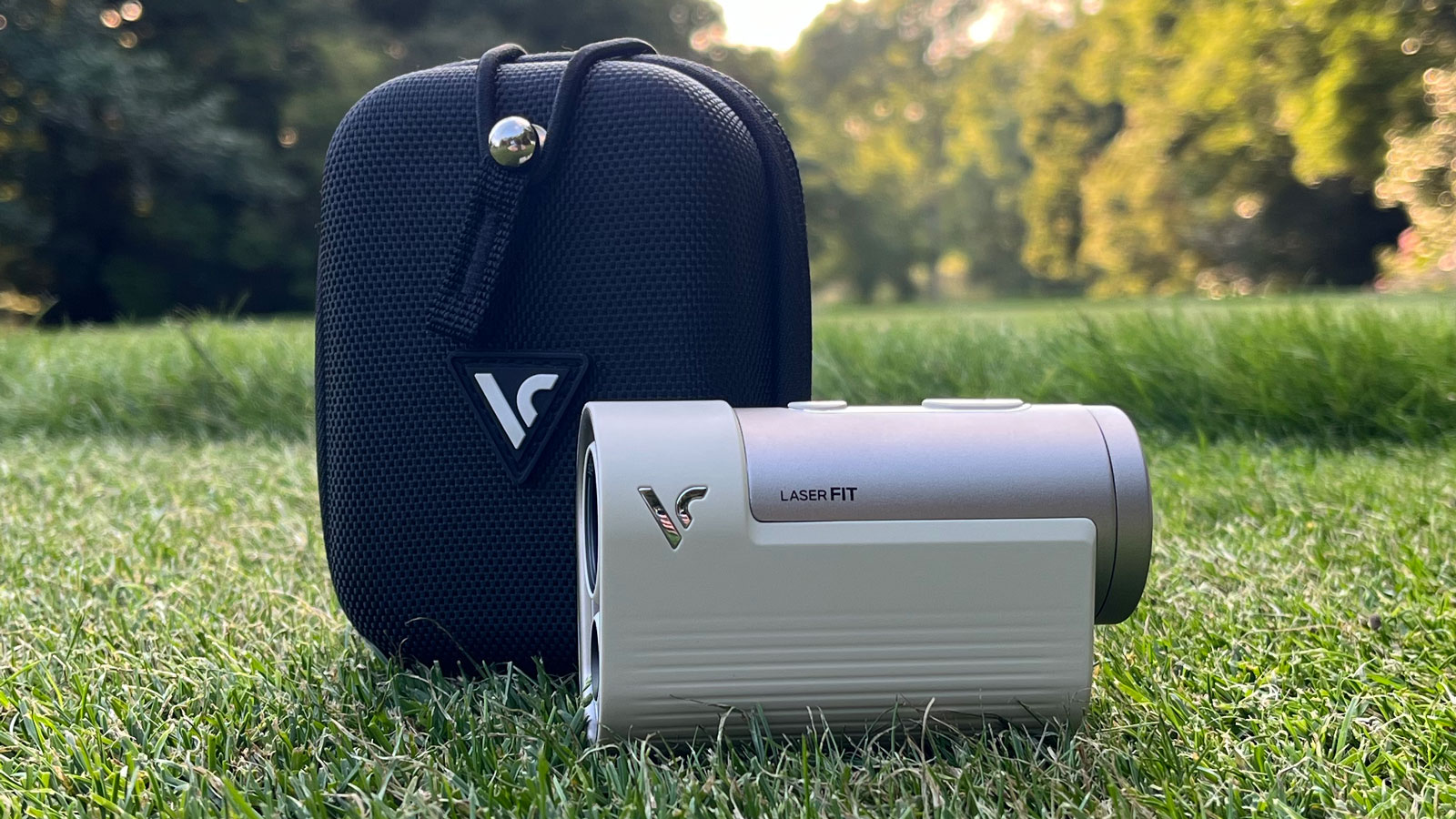
Specifications
Reasons to buy
Reasons to avoid
We've been really impressed by Voice Caddie products we've tested in the last few years and the Laser Fit is the latest rangefinder from them. It is the smallest rangefinder they've ever made and comes in at a nice price point of just $200. It's incredibly lightweight too, weighing just 4oz in total, while the bright graphics and haptic feedback when you've successfully zapped the pin, which we found to be a simple experience. These graphics are bolstered by the dual display, which will show up in either black or red depending on the light conditions.
Slope mode proved to be simple to use and accurate too, but the way the Laser Fit differentiates itself is via the triangulation feature. This allows you to zap the ball, and then pin, to give you a yardage, which is useful when not standing next to your golf ball.
It's not fully waterproof though, and the lightweight nature of this device means it isn't the sturdiest either - that's the only drawback we found while testing it. But overall given the price and features, the Laser Fit is definitely a model to consider.
- Read our full Voice Caddie Laser Fit Rangefinder
Best watch
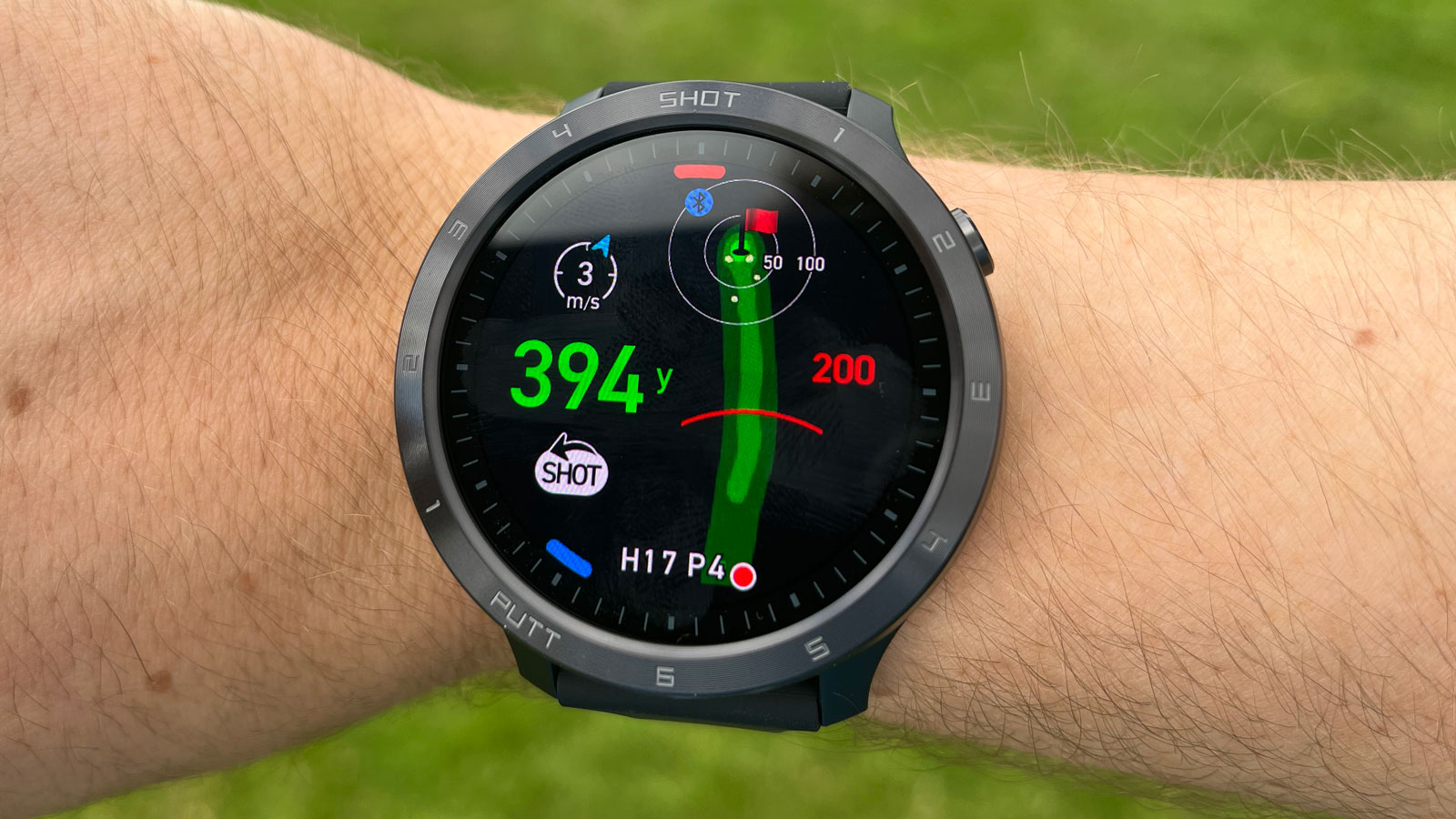
Golf Monthly testing the Voice Caddie T11 Pro Golf GPS Watch on the course
Specifications
Reasons to buy
Reasons to avoid
My top watch pick from the brand is the T11 Pro, a featured packed watch that boasts a high-quality casing and a fantastically clear touchscreen, that benefits from OLED technology. The clarity makes the graphics easy to use, while the touchscreen element proved to be perfectly responsive.
Moving to the GPS technology, while you get the necessities such as yardages and wind direction, there’s a myriad of extras from automatic slope calculation to putt tracking to green undulation data. The Smart Approach View, left us impressed, displaying not only the shape of the green but also a color gradient to visually demonstrate the slope. Neatly, it also rotates to your exact position.
The amount of data that’s delivered automatically helps to make this feature-packed watch more user friendly than it might at first appear. I found the numbers to be accurate and the key features, such as the full-hole mapping, are delivered with aplomb, again aided greatly by the watch’s ability to serve it up automatically.
Ultimately, this is a feature-heavy watch that will appeal best to those who crave data and lots of it. I will note though it does come with a pretty hefty price tag.
- Read our full Voice Caddie T11 Pro Golf GPS Watch Review
Best versatility
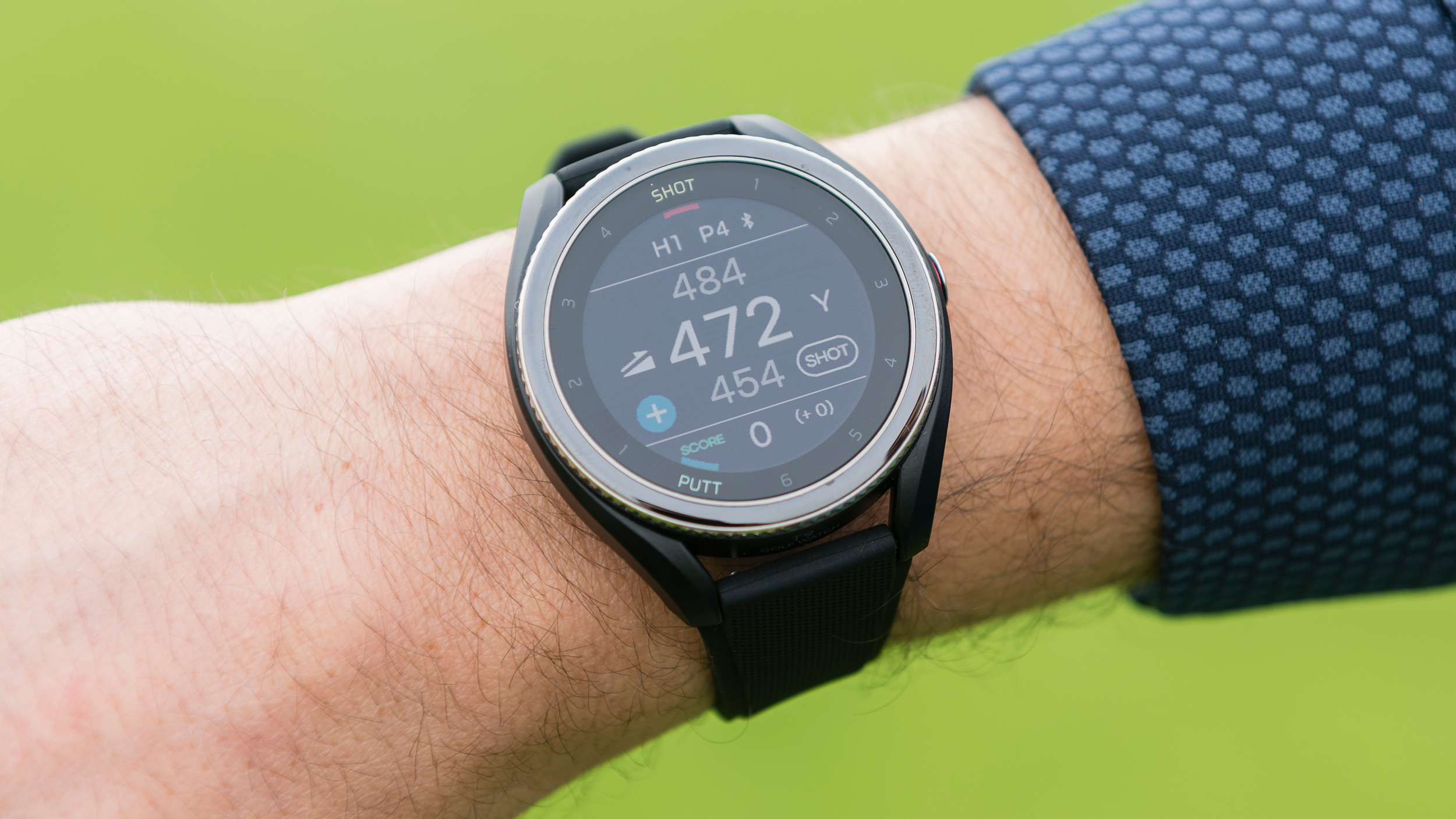
Specifications
Reasons to buy
Reasons to avoid
The second watch we included in this guide is the T9 and our first impressions during testing were good. It looks fantastic thanks to the slick, modern styling, and the shiny silver bezel adds to the off-course versatility which therefore enhances its value. Not to mention it is very lightweight too.
The LCD color touch screen is bright and readable in all light conditions and super responsive. It also has the basics covered in relation to accurate yardages too on that main screen. You get front, middle and back yardages and we noticed a slope icon to the left as well which factored in slope for enhanced accuracy as well.
Again we see Voice Caddie going a step further though because if you swipe left you can see a heat map of the green to show undulations both their direction and color-coded by severity, with arrows indicating the main borrows. What's more, the main screen also displays the hole number and par as well as your current score, assuming you’re entering it as you go along.
- Read our full Voice Caddie T9 Golf GPS Watch Review
Best value watch
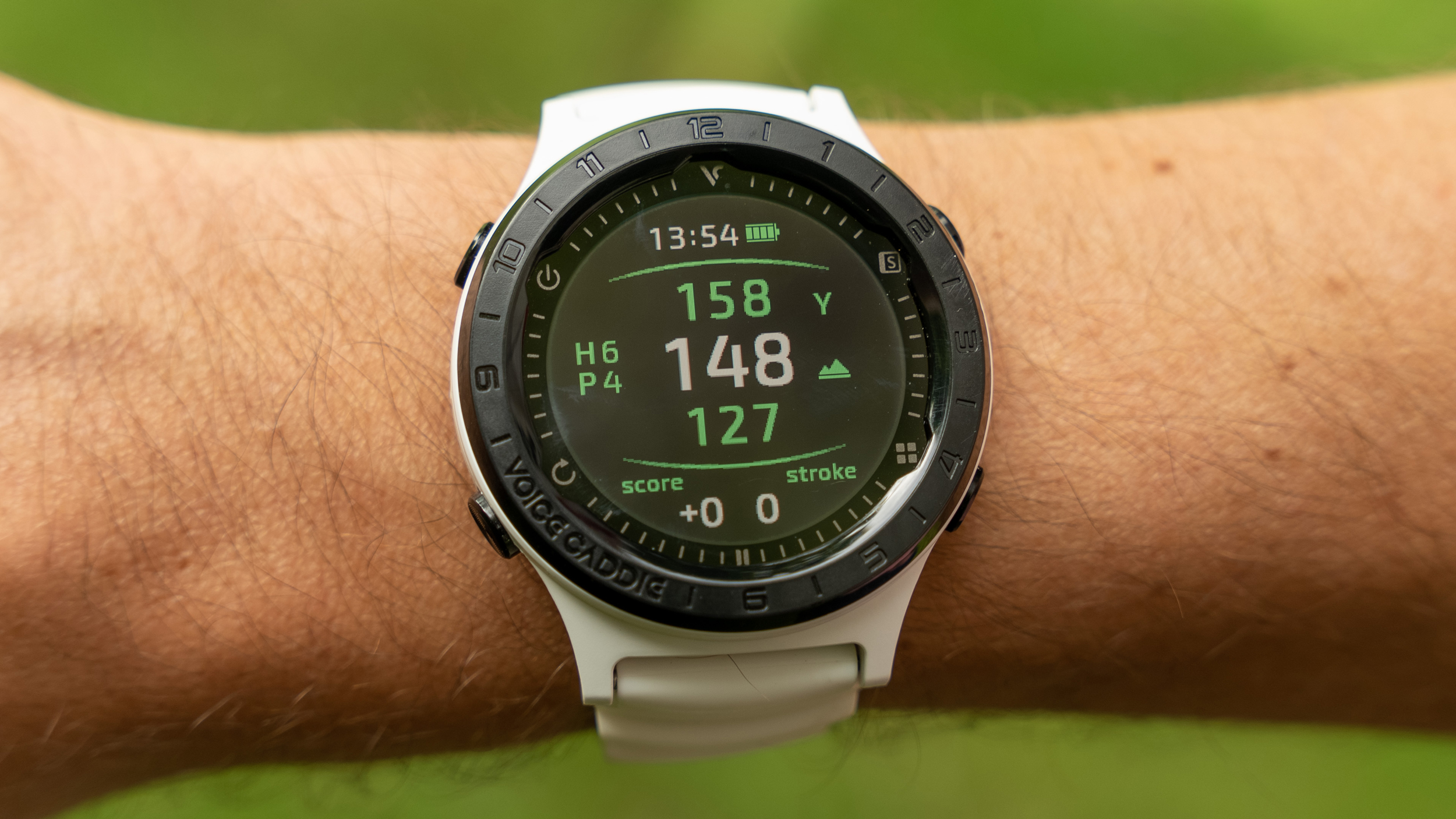
Specifications
Reasons to buy
Reasons to avoid
Next up we have the A2, a stylish, modern and waterproof watch which features a lightweight white strap which looks great and offers a comfortable fit. Along with the fit, it is extremely easy to use. This is thanks to the A2 using a combination of the color touch screen and four corner buttons. The right hand buttons double as up and down functions on certain menus, but you can swipe the screen up or down to achieve the same thing.
Lastly, the touch screen itself is responsive enough and becomes brighter when you lift it up to look at it, a clever feature that no doubt saves on battery life too, with the A2 crammed with features and technology. It's a little more basic than the T9 and the price reflects this, but for most golfers it provides more than enough information to select the right club on every shot.
- Read our full Voice Caddie A2 Golf Watch Review
How we test rangefinders
At Golf Monthly we have a comprehensive testing procedure around DMDs (Distance Measurement Devices). This involves use over mutliple rounds of golf in different locations. What is nice about these devices is that we need them for when we test club equipment, meaning they get a serious testing before we write up our reviews.
What this also means is that our team of reviewers know exactly what makes a good or bad rangefinder given how often we use them. We've also slowly watched as the quality of these devices has got better and better over the years.
Our review team are all passionate golfers whose goal is to given informative, bias free reviews so you can make the best buying decision for your golfing setup. Given our experience with rangefinders and watches, we know what makes a good bit of GPS equipment - accuracy, waterproofing, durability and more. We also know how they compare to other devices on the market and will tell you so.
It's worth noting that no manufacturer gets preferential treatment in our reviews, nor can a brand 'buy' a good review. If we give a product five stars it's because we really like it!
How to choose a rangefinder
There are a lot of options out there, so much so that it can become a little daunting given there might be too much choice (if there ever is such a thing!). Here are a few pointers to keep in mind to help narrow down your search to ensure you pick the best device to suit your game.
1. Accuracy
There isn't much point investing in a range finder that gives you an incorrect yardage. A quick search of Amazon will show you a whole heap of range finders, some of which seem very appealing given their price point. However, we'd urge you to stay away - most don't have a warranty and are fairly inaccurate when it comes to the yardage feedback they provide.
Instead, we'd recommend keeping to the trusted brands like Voice Caddie or other brands in our best golf rangefinders guide. If you are looking at the lower side of the price scale for a device, then check out our favorites in our best budget rangefinders. Here you'll find great value for money on devices that are reliable and accurate.
2. Distance
Different rangefinders deliver different maximum distances and depending on the type of courses you're playing or what you're planning on using your DMD for, you may want to consider the distance it offers. The greater the distance, the better chance you'll have of getting accurate readings on greens that are far away.
3. Slope
Slope is a relatively new feature with rangefinders. It essentially calculates how much the elevation change you face, whether uphill or downhill, will impact your yardage. You could have a downhill Par 3 that measures 160 yards but actually plays 150 yards due to the elevation - a device with slope will feed this information back to you which helps removes the guesswork and margin for error. It's not an essential features, but it's a really handy one. If you like the sound of it, have a look at our best golf rangefinders with slope for some of the best on the market.
4. Waterproofing
You probably won't have to worry about this as much if you live in Southern California or Arizona, but for those who play in Scotland or Ireland, it's worth getting a waterproof rangefinder so it doesn't fall victim to that unexpected shower that will inevitably roll in half way through your round.
5. Convenience
Speaking of convenience, rangefinders have to be quick and easy to use. Get it out, measure the flag, put it away in its case. If a laser is complicated or takes a while to display a measurement, then it adds time rather than saves it. To work this out, we would often recommend trying out some models in retailers and pro shops.
If you're looking for some amazing deals on golf technology, then why not also check out our guides to the best GolfBuddy rangefinders, best Garmin golf watches and best Bushnell Golf Rangefinders.
FAQs
Should I buy a rangefinder with slope settings?
This is totally dependent on the type of course you play. If you play at a course like TPC Sawgrass every week and don't tend to play elsewhere, you'll likely not need the feature. If you play a hilly course or a track with plenty of elevation changes like Chambers Bay or Royal County Down, a slope feature can come in really handy. If you're looking at one of the more premium rangefinders, it could be worth investing in one with this feature.
Do rangefinders tell you what club to use?
Typically, no. They only tell you the distance from where you are currently stood to the hole or the point of interest you are looking at. But that enables you to work out what club you want to use to get you to the green. That does rely on you knowing the distances you hit each club, but you can work that out by using a rangefinder.
What distance can rangefinders measure?
A golf rangefinder can usually measure from 1 yard up to 900 yards in distance, with most picking out the flag from up to 450 yards away. That allows players to gain accurate distances from their ball to the green pretty much wherever they are on the course.
Subscribe to the Golf Monthly newsletter to stay up to date with all the latest tour news, equipment news, reviews, head-to-heads and buyer’s guides from our team of experienced experts.

Dan has been with the Golf Monthly team since 2021. He graduated with a Master's degree in International Journalism from the University of Sussex and looks after equipment reviews and buying guides, specializing in golf shoes, golf bags, golf trolleys, and apparel reviews. Dan is also a co-host of Kick Point: The Golf Gear Show. A left-handed golfer, his handicap index is currently 7.1, and he plays at Fulford Heath Golf Club in the West Midlands.
Dan's current What's In The Bag:
Driver: Cobra DS-Adapt X
Mini driver: TaylorMade R7 Quad Mini
Fairway: Ping G440 Max 21°
Irons: Titleist T250 (5), Titleist T100 (6-PW)
Wedges: Ping Glide Forged Pro (50, 56, 60)
Putter: TaylorMade Spider Tour X
Ball: Titleist Pro V1x
Grip: Golf Pride Tour Velvet
Bag: Vessel Sunday III
- Joel TadmanDeputy Editor